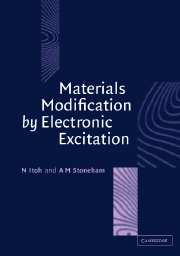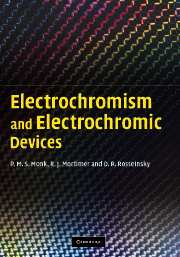Refine search
Actions for selected content:
106104 results in Materials Science
6 - Polymers of larger connectivity: branched polymers and polymeric fractals
-
- Book:
- Reinforcement of Polymer Nano-Composites
- Published online:
- 06 January 2010
- Print publication:
- 13 August 2009, pp 64-74
-
- Chapter
- Export citation
3 - Many-chain systems: melts and screening
-
- Book:
- Reinforcement of Polymer Nano-Composites
- Published online:
- 06 January 2010
- Print publication:
- 13 August 2009, pp 19-30
-
- Chapter
- Export citation
7 - Reinforcing fillers
-
- Book:
- Reinforcement of Polymer Nano-Composites
- Published online:
- 06 January 2010
- Print publication:
- 13 August 2009, pp 75-100
-
- Chapter
- Export citation
Preface
-
- Book:
- Reinforcement of Polymer Nano-Composites
- Published online:
- 06 January 2010
- Print publication:
- 13 August 2009, pp ix-xi
-
- Chapter
- Export citation
1 - Introduction
-
- Book:
- Reinforcement of Polymer Nano-Composites
- Published online:
- 06 January 2010
- Print publication:
- 13 August 2009, pp 1-9
-
- Chapter
- Export citation
2 - Basics about polymers
-
- Book:
- Reinforcement of Polymer Nano-Composites
- Published online:
- 06 January 2010
- Print publication:
- 13 August 2009, pp 10-18
-
- Chapter
- Export citation
References
-
- Book:
- Reinforcement of Polymer Nano-Composites
- Published online:
- 06 January 2010
- Print publication:
- 13 August 2009, pp 196-203
-
- Chapter
- Export citation
Index
-
- Book:
- Reinforcement of Polymer Nano-Composites
- Published online:
- 06 January 2010
- Print publication:
- 13 August 2009, pp 204-209
-
- Chapter
- Export citation
8 - Hydrodynamic reinforcement of elastomers
-
- Book:
- Reinforcement of Polymer Nano-Composites
- Published online:
- 06 January 2010
- Print publication:
- 13 August 2009, pp 101-117
-
- Chapter
- Export citation
9 - Polymer–filler interactions
-
- Book:
- Reinforcement of Polymer Nano-Composites
- Published online:
- 06 January 2010
- Print publication:
- 13 August 2009, pp 118-152
-
- Chapter
- Export citation
5 - The elastomer matrix
-
- Book:
- Reinforcement of Polymer Nano-Composites
- Published online:
- 06 January 2010
- Print publication:
- 13 August 2009, pp 40-63
-
- Chapter
- Export citation
Contents
-
- Book:
- Reinforcement of Polymer Nano-Composites
- Published online:
- 06 January 2010
- Print publication:
- 13 August 2009, pp v-viii
-
- Chapter
- Export citation
10 - Filler–filler interaction
-
- Book:
- Reinforcement of Polymer Nano-Composites
- Published online:
- 06 January 2010
- Print publication:
- 13 August 2009, pp 153-195
-
- Chapter
- Export citation
Frontmatter
-
- Book:
- Reinforcement of Polymer Nano-Composites
- Published online:
- 06 January 2010
- Print publication:
- 13 August 2009, pp i-iv
-
- Chapter
- Export citation
Acknowledgement
-
- Book:
- Reinforcement of Polymer Nano-Composites
- Published online:
- 06 January 2010
- Print publication:
- 13 August 2009, pp xii-xii
-
- Chapter
- Export citation

Materials Modification by Electronic Excitation
-
- Published online:
- 11 August 2009
- Print publication:
- 09 November 2000

Electrochromism and Electrochromic Devices
-
- Published online:
- 10 August 2009
- Print publication:
- 15 November 2007

Laser Induced Breakdown Spectroscopy
-
- Published online:
- 08 August 2009
- Print publication:
- 07 September 2006
Materials at 200 mph: Making NASCAR Faster and Safer
-
- Journal:
- MRS Bulletin / Volume 34 / Issue 8 / August 2009
- Published online by Cambridge University Press:
- 31 January 2011, pp. 602-606
- Print publication:
- August 2009
-
- Article
- Export citation
Grain refinement effect of a pulsed magnetic field on as-cast superalloy K417
-
- Journal:
- Journal of Materials Research / Volume 24 / Issue 8 / August 2009
- Published online by Cambridge University Press:
- 31 January 2011, pp. 2670-2676
- Print publication:
- August 2009
-
- Article
- Export citation
